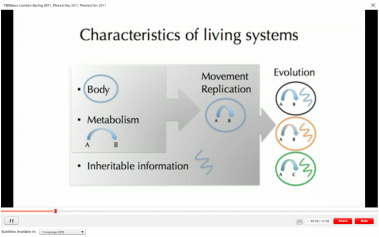“We can’t solve problems by using the same kind of thinking we used when we created them” – Albert Einstein.
The Philippines’ witnessed a lobbying disaster in the last week of 2011. This is (unexpectedly) a good thing because it offers insights into what could lie ahead for the ‘disaster risk reduction’ agenda, worldwide.
After years of persistent lobbying and collaboration at the highest levels, the country has been lauded for attempting to comprehensively address disaster prevention measures through the adoption of the National Disaster Risk Reduction and Management Act in 2010.
A milestone, and yet, stymied by political interpretations.
The President recently ‘cautioned’ against using the national Calamity Fund for pre-disaster activities such as “preparation of relocation sites/facilities, and training of personnel engaged in direct disaster management”. This has been justified because it is believed that funds for pre-disaster activities have been “effectively integrated in various agency budgets”.
This ‘caution’ goes contrary to the spirit and text of the National Disaster Risk Reduction and Management Act of 2010, which specifies up to 70 per cent of national and local Calamity Funds for pre-disaster preparedness and risk reduction activities. The ‘caution’ also goes contrary to the on-the-ground reality of underprepared local governance capacities and resources for the implementation of comprehensive disaster risk reduction measures.
Have we witnessed the two steps forward and five steps backward symptom again? What are some of the lessons to be learnt by other progressive efforts worldwide?
Importantly, does this symptom tell us that the ‘disaster risk reduction’ agenda needs a more compelling story-based strategy? A story that can counter the dominant political narrative, i.e. - sound disaster response and recovery amounts to good politics, but sound disaster prevention amounts to invisible economics? A story that can provide a consistent narrative of what a successful adoption of disaster risk reduction measures would look like? A story that can both, mobilize and persuade?
Borrowing from the Smartmeme narrative analysis, the disaster risk reduction agenda could adopt a story-based strategy with a dual attempt to:
1. ‘Mobilize the choir’, the believers/ the converted, who understand the ‘story of the battle’ and can act in decisive unity to attain common disaster risk reduction goals.
2. ‘Persuade the congregation’, the power holders/ the public, who still need to be convinced of the merits of the risk reduction narrative, through a ‘battle of the story’.
Whether through stratagem or strategy, the ‘battle’ has to be opportunistically and consistently waged on both fronts.
As we step into 2012, the disaster risk reduction agenda will have to work towards framing a ‘story’ (with the choir and for the congregation), to be able to counter dominant narratives that manufacture disaster risks, instead of reducing them.
“Truth and power belong to those who tell a better story” – Stephen Duncombe
The Philippines’ witnessed a lobbying disaster in the last week of 2011. This is (unexpectedly) a good thing because it offers insights into what could lie ahead for the ‘disaster risk reduction’ agenda, worldwide.
After years of persistent lobbying and collaboration at the highest levels, the country has been lauded for attempting to comprehensively address disaster prevention measures through the adoption of the National Disaster Risk Reduction and Management Act in 2010.
A milestone, and yet, stymied by political interpretations.
The President recently ‘cautioned’ against using the national Calamity Fund for pre-disaster activities such as “preparation of relocation sites/facilities, and training of personnel engaged in direct disaster management”. This has been justified because it is believed that funds for pre-disaster activities have been “effectively integrated in various agency budgets”.
This ‘caution’ goes contrary to the spirit and text of the National Disaster Risk Reduction and Management Act of 2010, which specifies up to 70 per cent of national and local Calamity Funds for pre-disaster preparedness and risk reduction activities. The ‘caution’ also goes contrary to the on-the-ground reality of underprepared local governance capacities and resources for the implementation of comprehensive disaster risk reduction measures.
Have we witnessed the two steps forward and five steps backward symptom again? What are some of the lessons to be learnt by other progressive efforts worldwide?
Importantly, does this symptom tell us that the ‘disaster risk reduction’ agenda needs a more compelling story-based strategy? A story that can counter the dominant political narrative, i.e. - sound disaster response and recovery amounts to good politics, but sound disaster prevention amounts to invisible economics? A story that can provide a consistent narrative of what a successful adoption of disaster risk reduction measures would look like? A story that can both, mobilize and persuade?
Borrowing from the Smartmeme narrative analysis, the disaster risk reduction agenda could adopt a story-based strategy with a dual attempt to:
1. ‘Mobilize the choir’, the believers/ the converted, who understand the ‘story of the battle’ and can act in decisive unity to attain common disaster risk reduction goals.
2. ‘Persuade the congregation’, the power holders/ the public, who still need to be convinced of the merits of the risk reduction narrative, through a ‘battle of the story’.
Whether through stratagem or strategy, the ‘battle’ has to be opportunistically and consistently waged on both fronts.
As we step into 2012, the disaster risk reduction agenda will have to work towards framing a ‘story’ (with the choir and for the congregation), to be able to counter dominant narratives that manufacture disaster risks, instead of reducing them.
“Truth and power belong to those who tell a better story” – Stephen Duncombe

 RSS Feed
RSS Feed